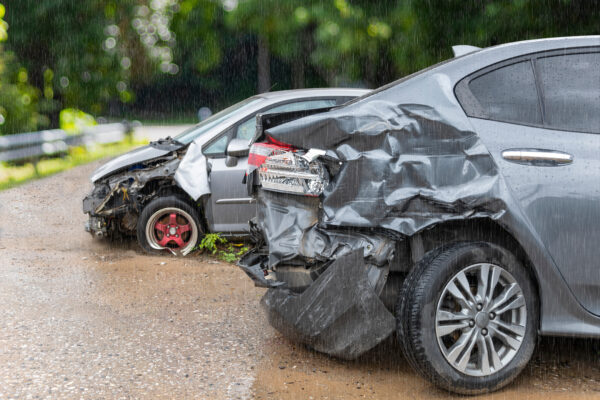Idaho is known for its beautiful landscapes and scenic routes. However, winter in Idaho also brings challenging driving conditions that require extra caution. As the leading law firm in Idaho, Hepworth Holzer, LLP understands the importance of promoting safe driving practices. In this article, we will provide valuable tips to help you avoid car accidents while driving in Idaho’s winter conditions. By following these guidelines, you can protect yourself and others on the road.
Prepare Your Vehicle
Before winter arrives, it’s crucial to prepare your vehicle for the challenging conditions ahead. Here are some essential steps to take:
- Winter Tires: Invest in a set of quality winter tires to enhance traction and control on icy and snowy roads.
- Battery Check: Cold weather can weaken your car’s battery. Ensure that it is fully charged and in good condition.
- Fluid Levels: Check and top up all vital fluids, including antifreeze, oil, and windshield wiper fluid.
- Lights and Defrosters: Ensure all your lights are functioning correctly, and defrosters are in proper working order for maximum visibility.
- Brakes: Have your brakes inspected and maintained regularly to ensure optimal stopping power.
Plan Ahead and Monitor Weather Conditions
Keeping track of weather forecasts is crucial before embarking on any winter journey. Here’s what you need to do:
- Plan Your Route: Opt for well-maintained roads and highways that are frequently cleared during winter. Avoid back roads that may be more hazardous.
- Check Road Conditions: Utilize online resources or apps that provide real-time information about road conditions, closures, and accidents.
- Allow Extra Time: Plan to leave earlier than usual, allowing ample time to reach your destination safely without feeling rushed.
Adjust Your Driving Style
Driving in winter conditions demands a different approach compared to regular driving. Follow these guidelines to adapt your driving style accordingly:
- Reduce Speed: Slow down and drive below the posted speed limit to maintain control on slippery surfaces.
- Increase Following Distance: Allow a minimum of three car lengths between you and the vehicle in front of you to provide enough time to react and stop.
- Gentle Acceleration and Braking: Apply the gas and brakes gradually to avoid skidding. Sudden movements can lead to loss of control.
- Avoid Cruise Control: Refrain from using cruise control in icy or snowy conditions, as it can hinder your ability to react quickly.
- Use Low Beams: During snowfall or heavy fog, use low-beam headlights to improve visibility and reduce glare.
Safety Essentials
Equipping your vehicle with essential safety items is crucial in case of an emergency:
- Winter Emergency Kit: Carry items such as a flashlight, ice scraper, jumper cables, blankets, a first aid kit, a shovel, and extra warm clothing.
- Cell Phone Charger: Keep a charger in your vehicle to ensure you can call for help if needed.
Stay Informed About Idaho’s Requirements
It’s essential to familiarize yourself with Idaho’s specific requirements when it comes to driving in winter conditions:
- Studded Tires: Idaho allows the use of studded tires between October 1 and April 30. However, be aware of specific regional restrictions.
- Traction Devices: In certain winter conditions, you may be required to use traction devices such as chains or snow tires.
- Winter Driving Safety Laws: Familiarize yourself with Idaho’s winter driving laws, including any specific requirements regarding speed limits, following distances, and overtaking snowplows.
If involved in a car accident during Idaho’s winter conditions, it’s essential to take the necessary steps to protect your rights and ensure fair compensation. While these tips can help you avoid accidents, unforeseen circumstances can still occur. If you find yourself in such a situation, here are some important actions to consider:
- Check for Injuries: Your safety and the safety of others involved should be the top priority. Check yourself and others for injuries and seek medical attention immediately if needed.
- Contact the Authorities: Call the local police or emergency services to report the accident. They will assess the situation, document the incident, and provide necessary assistance.
- Document the Accident: If it’s safe to do so, gather evidence at the scene. Take photos of the vehicles involved, the surrounding area, and any visible damages. Obtain contact information from witnesses, if possible.
- Exchange Information: Exchange insurance and contact details with the other party involved in the accident. Include names, phone numbers, addresses, and insurance policy information.
- Notify Your Insurance Company: Contact your insurance provider as soon as possible to report the accident. They will guide you through the claims process and provide instructions on how to proceed.
- Consult with an Attorney: If you’ve been injured or believe that the accident was a result of someone else’s negligence, consider consulting with a personal injury attorney. They can assess your case, provide legal advice, and represent your interests.
At Hepworth Holzer, LLP, we prioritize the safety and well-being of Idaho residents. If you or a loved one have been involved in a winter car accident, our experienced team of attorneys is here to help. We understand the complexities of these cases and will work diligently to protect your rights and secure the compensation you deserve.
Don’t hesitate to contact our office today for a free consultation. Let us handle the legal matters while you focus on recovery. Together, we can navigate through the challenges and ensure a brighter future.
Driving in Idaho’s winter conditions requires extra attention and preparation. By implementing the tips mentioned above, you can significantly reduce the risk of car accidents and keep yourself and others safe on the road. Remember, it’s better to be cautious and arrive late than to risk your well-being. Stay informed, be prepared, and drive responsibly. Safe travels!

